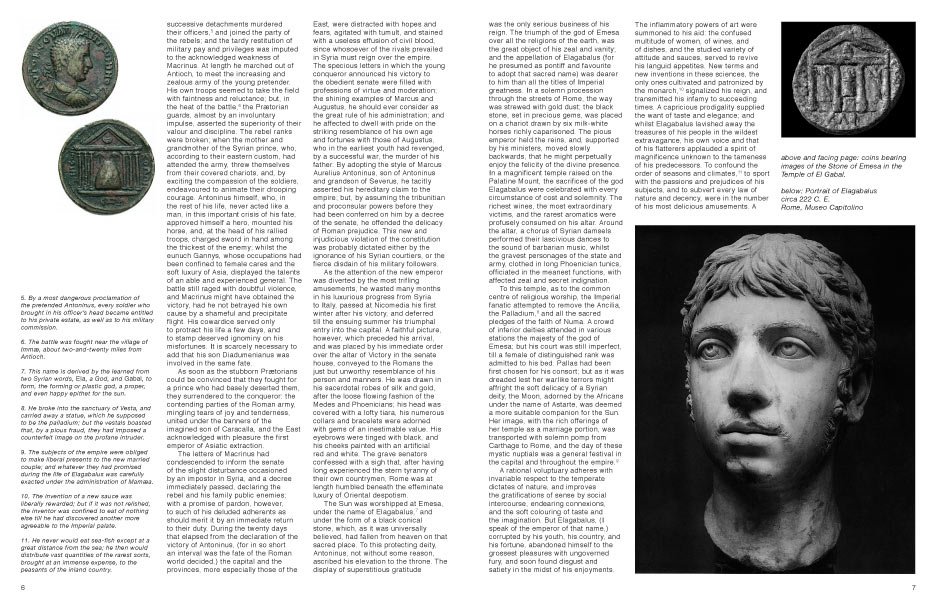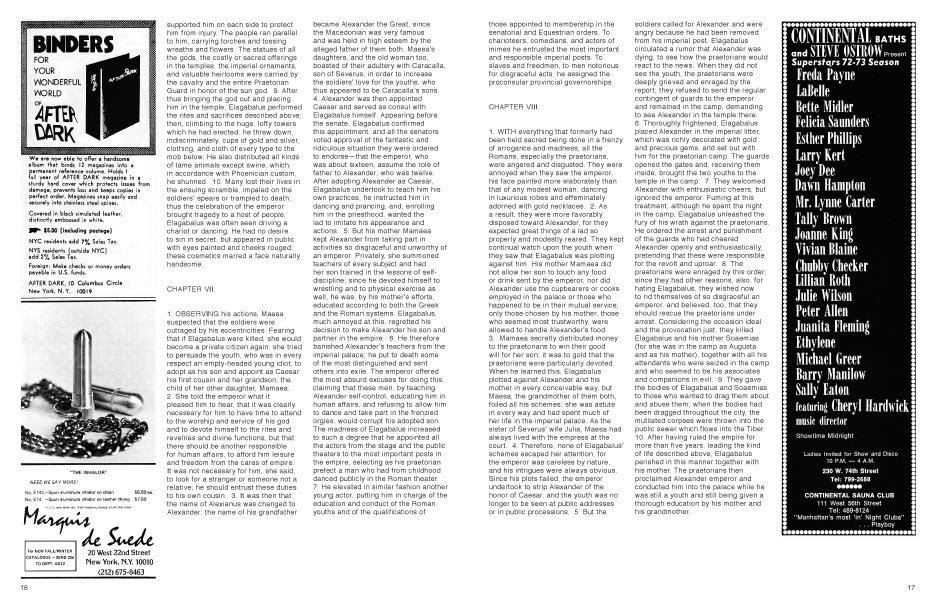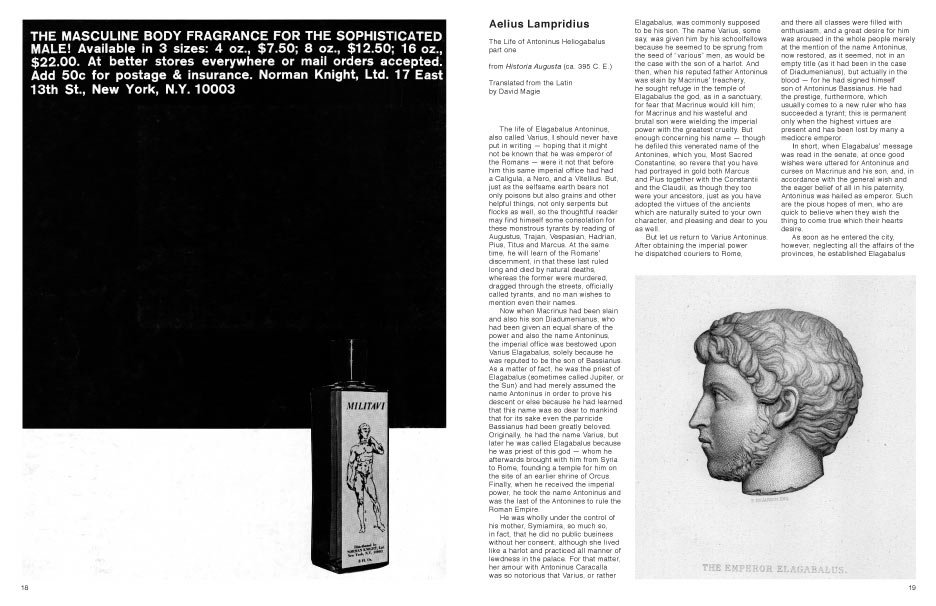 Image 1 of 11
Image 1 of 11

 Image 2 of 11
Image 2 of 11

 Image 3 of 11
Image 3 of 11

 Image 4 of 11
Image 4 of 11

 Image 5 of 11
Image 5 of 11

 Image 6 of 11
Image 6 of 11

 Image 7 of 11
Image 7 of 11

 Image 8 of 11
Image 8 of 11

 Image 9 of 11
Image 9 of 11

 Image 10 of 11
Image 10 of 11

 Image 11 of 11
Image 11 of 11

Heliogabalus – William E. Jones
The third release in a series of books by William E. Jones, Heliogabalus pays tribute to the most decadent Roman Emperor. Who was this creature who called himself Elagabalus, after El Gabal, god of the sun? What to make of his addiction to luxury, his overbearing mother, his controversial genitals? Enlightening texts can be found in the latest 2nd Cannons publication. The book features accounts of Heliogabalus by Edward Gibbon, Herodian, Cassius Dio, and the spurious Aelius Lampridius. It also contains a contemporary text, “This Necrophilic Strategy Entails Some Risk,” a collaboration by Bruce Hainley and William E. Jones, previously published only in expurgated form, and now presented with all lurid details intact.
Varius Avitus Bassanius, later known in his infamy as Heliogabalus, ruled Rome from 218 to 222 of the Common Era. After he was murdered by the soldiers who had formerly supported him, his successor, Alexander Severus, ordered that all sculptures of Heliogabalus be desecrated. The iconoclasm directed against Heliogabalus was so nearly complete that very few portraits of him still exist. William E. Jones has somewhat opportunistically dealt with the paucity of images of this imperial person by inserting advertisements from a bygone era at intervals in Heliogabalus. These advertisements, and the book’s design in general, derive from the pages of that avatar of 1970s urban culture, After Dark.
2nd Cannons Publications 016
2009, 1st printing, edition of 500.
8.5 x 11" 43 pages
ISBN: 978-0-9820559-1-5
The third release in a series of books by William E. Jones, Heliogabalus pays tribute to the most decadent Roman Emperor. Who was this creature who called himself Elagabalus, after El Gabal, god of the sun? What to make of his addiction to luxury, his overbearing mother, his controversial genitals? Enlightening texts can be found in the latest 2nd Cannons publication. The book features accounts of Heliogabalus by Edward Gibbon, Herodian, Cassius Dio, and the spurious Aelius Lampridius. It also contains a contemporary text, “This Necrophilic Strategy Entails Some Risk,” a collaboration by Bruce Hainley and William E. Jones, previously published only in expurgated form, and now presented with all lurid details intact.
Varius Avitus Bassanius, later known in his infamy as Heliogabalus, ruled Rome from 218 to 222 of the Common Era. After he was murdered by the soldiers who had formerly supported him, his successor, Alexander Severus, ordered that all sculptures of Heliogabalus be desecrated. The iconoclasm directed against Heliogabalus was so nearly complete that very few portraits of him still exist. William E. Jones has somewhat opportunistically dealt with the paucity of images of this imperial person by inserting advertisements from a bygone era at intervals in Heliogabalus. These advertisements, and the book’s design in general, derive from the pages of that avatar of 1970s urban culture, After Dark.
2nd Cannons Publications 016
2009, 1st printing, edition of 500.
8.5 x 11" 43 pages
ISBN: 978-0-9820559-1-5
The third release in a series of books by William E. Jones, Heliogabalus pays tribute to the most decadent Roman Emperor. Who was this creature who called himself Elagabalus, after El Gabal, god of the sun? What to make of his addiction to luxury, his overbearing mother, his controversial genitals? Enlightening texts can be found in the latest 2nd Cannons publication. The book features accounts of Heliogabalus by Edward Gibbon, Herodian, Cassius Dio, and the spurious Aelius Lampridius. It also contains a contemporary text, “This Necrophilic Strategy Entails Some Risk,” a collaboration by Bruce Hainley and William E. Jones, previously published only in expurgated form, and now presented with all lurid details intact.
Varius Avitus Bassanius, later known in his infamy as Heliogabalus, ruled Rome from 218 to 222 of the Common Era. After he was murdered by the soldiers who had formerly supported him, his successor, Alexander Severus, ordered that all sculptures of Heliogabalus be desecrated. The iconoclasm directed against Heliogabalus was so nearly complete that very few portraits of him still exist. William E. Jones has somewhat opportunistically dealt with the paucity of images of this imperial person by inserting advertisements from a bygone era at intervals in Heliogabalus. These advertisements, and the book’s design in general, derive from the pages of that avatar of 1970s urban culture, After Dark.
2nd Cannons Publications 016
2009, 1st printing, edition of 500.
8.5 x 11" 43 pages
ISBN: 978-0-9820559-1-5
